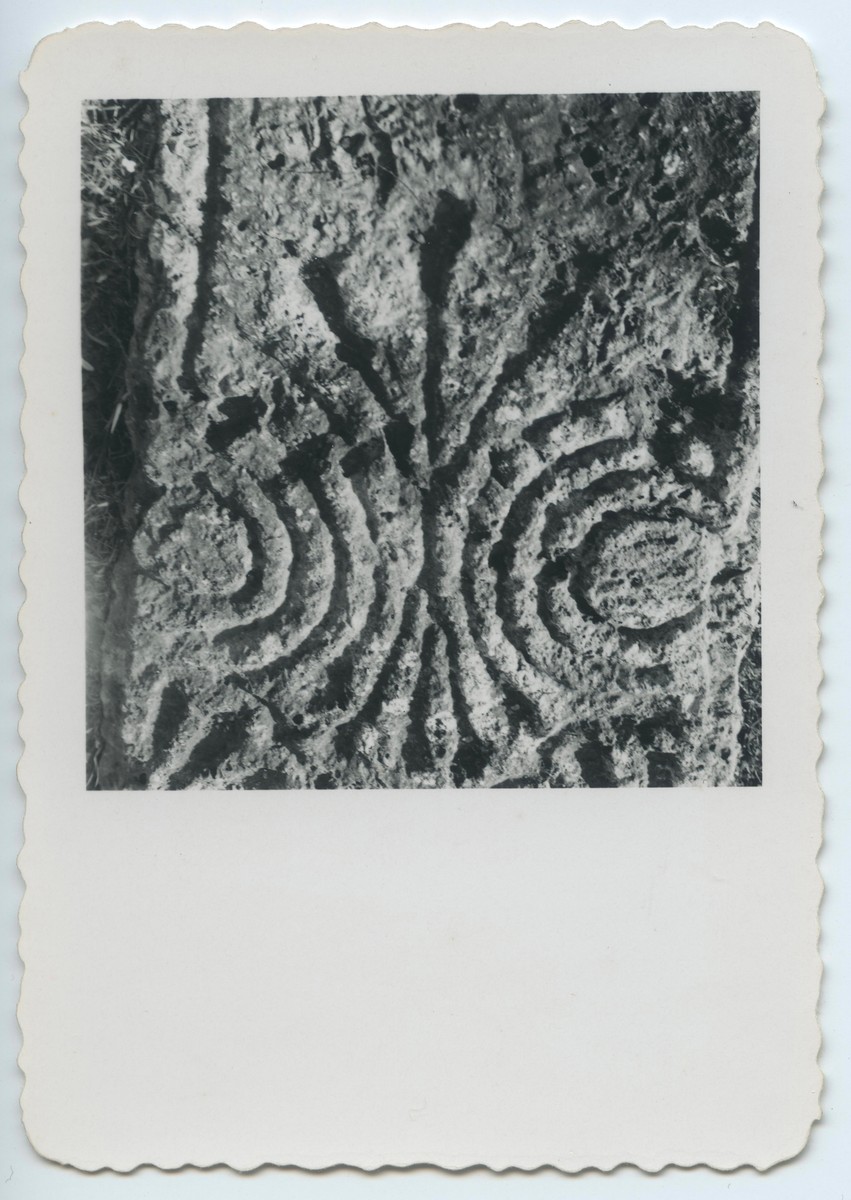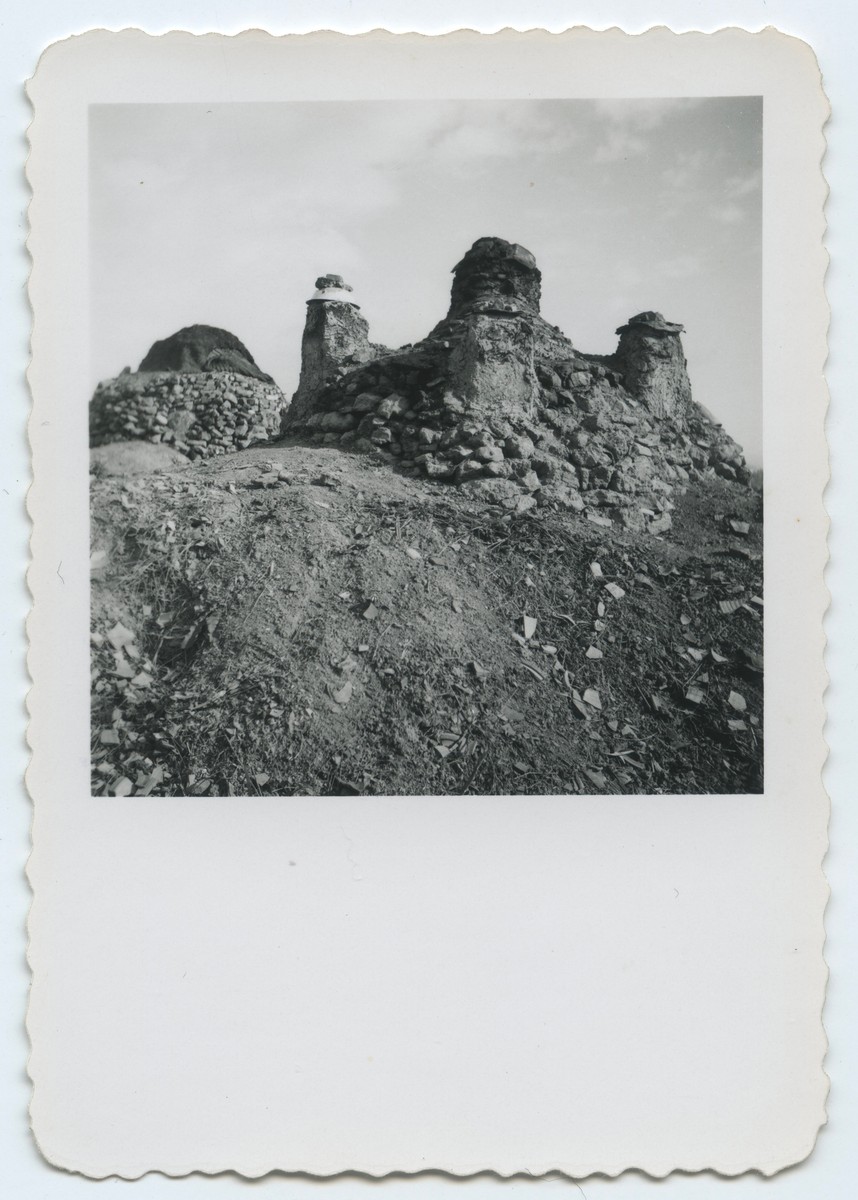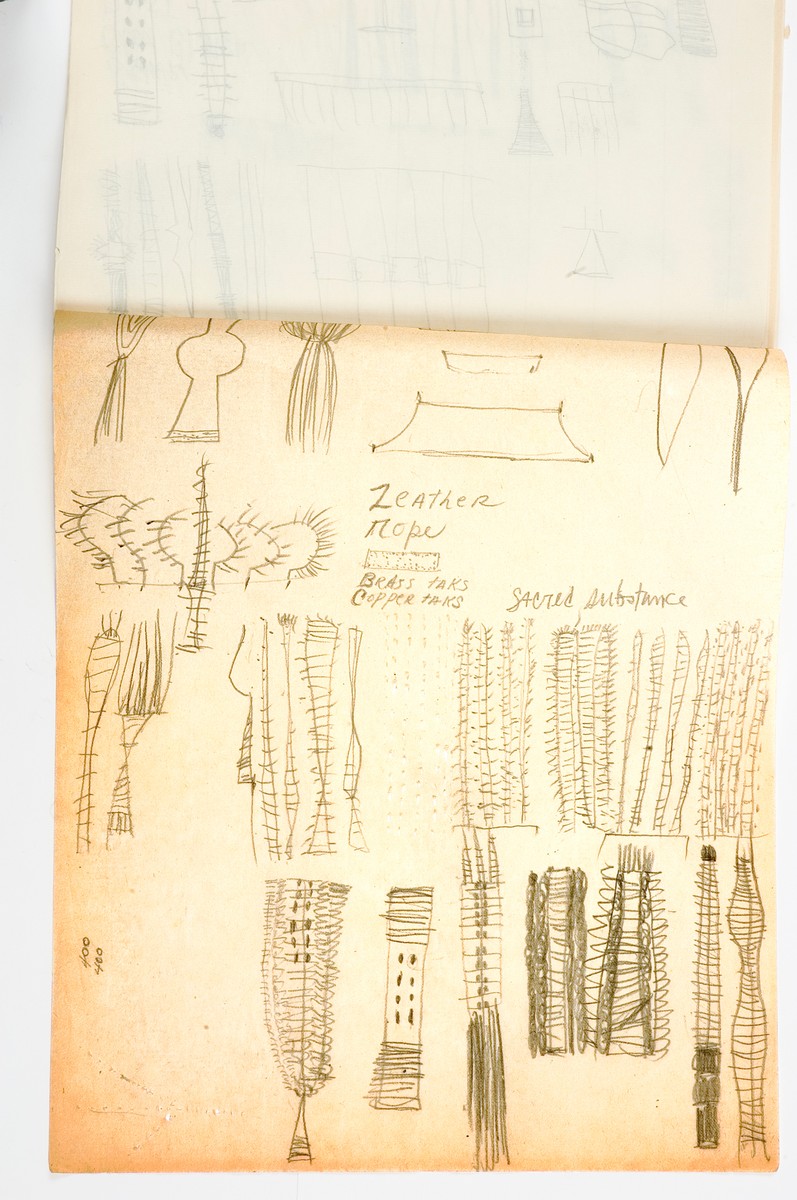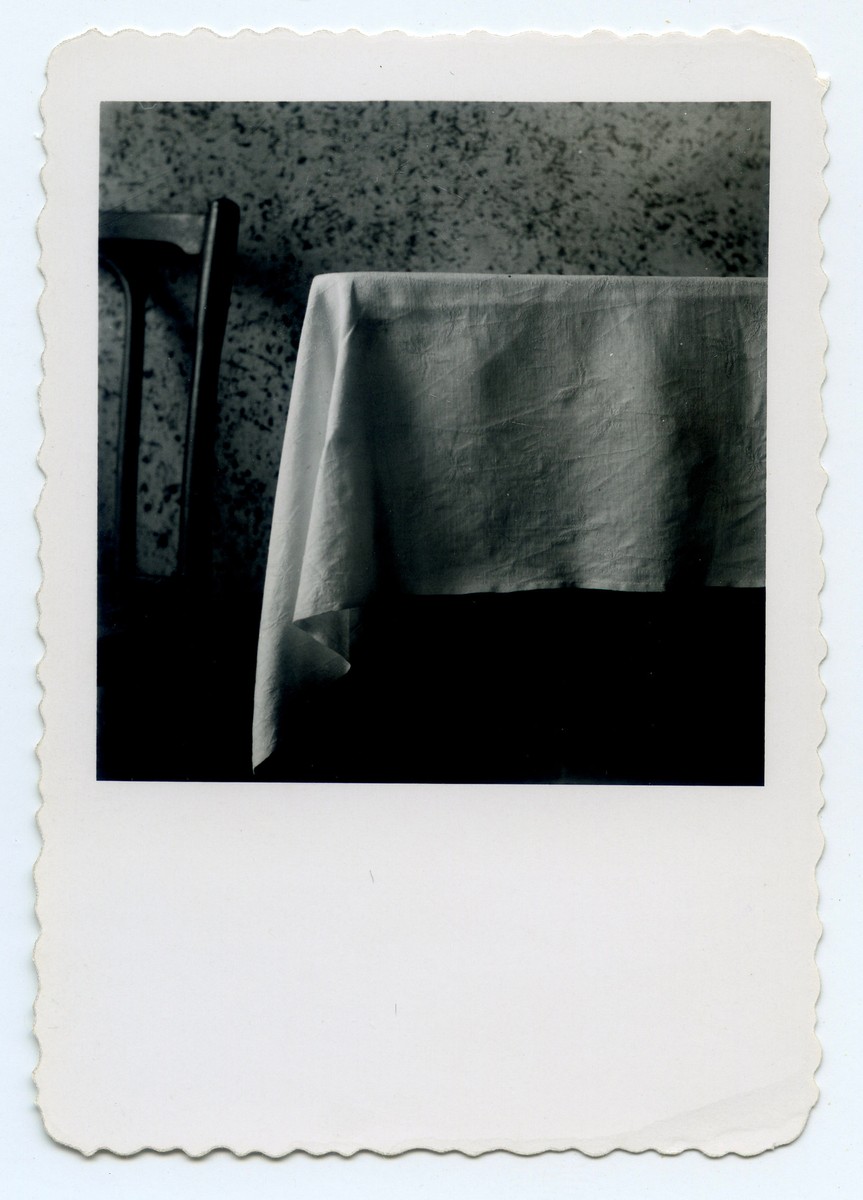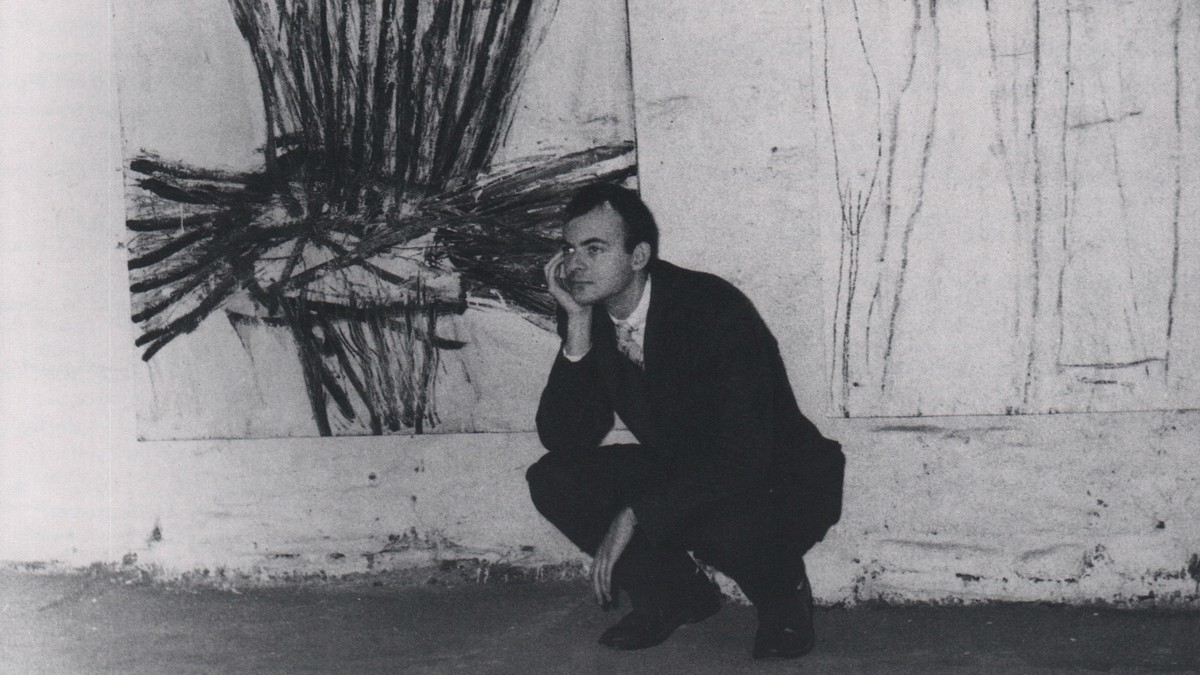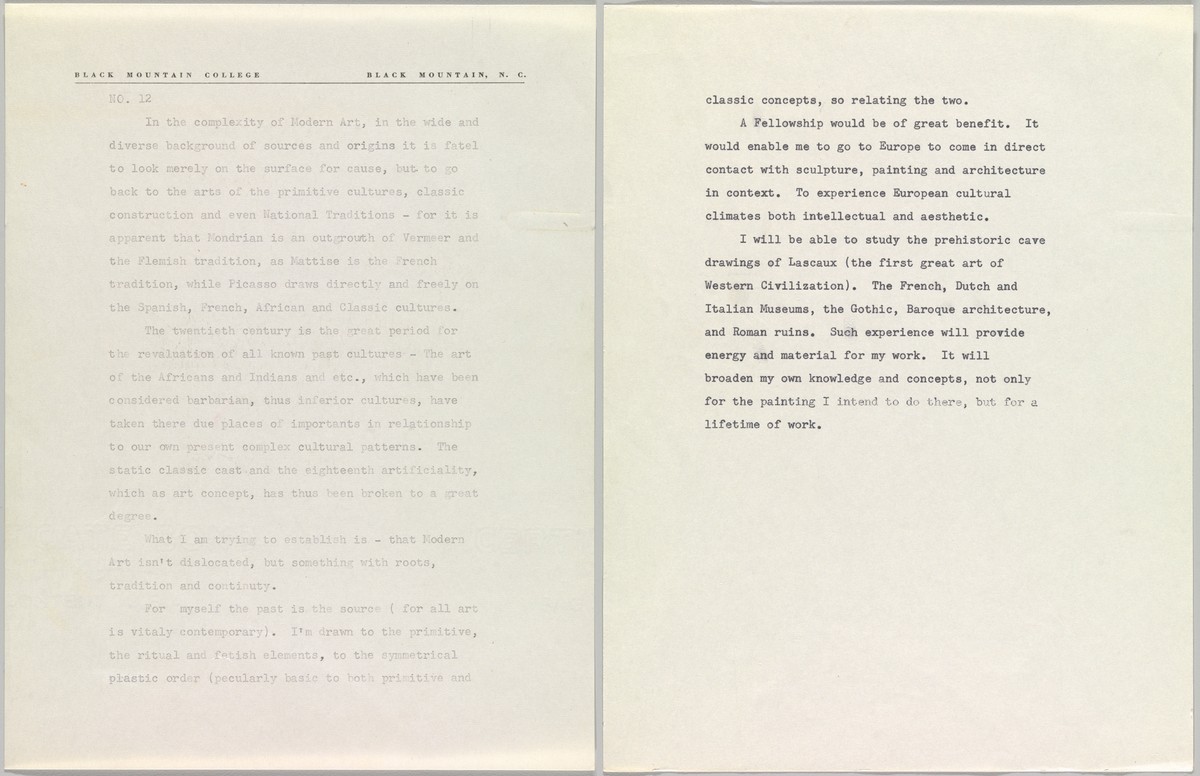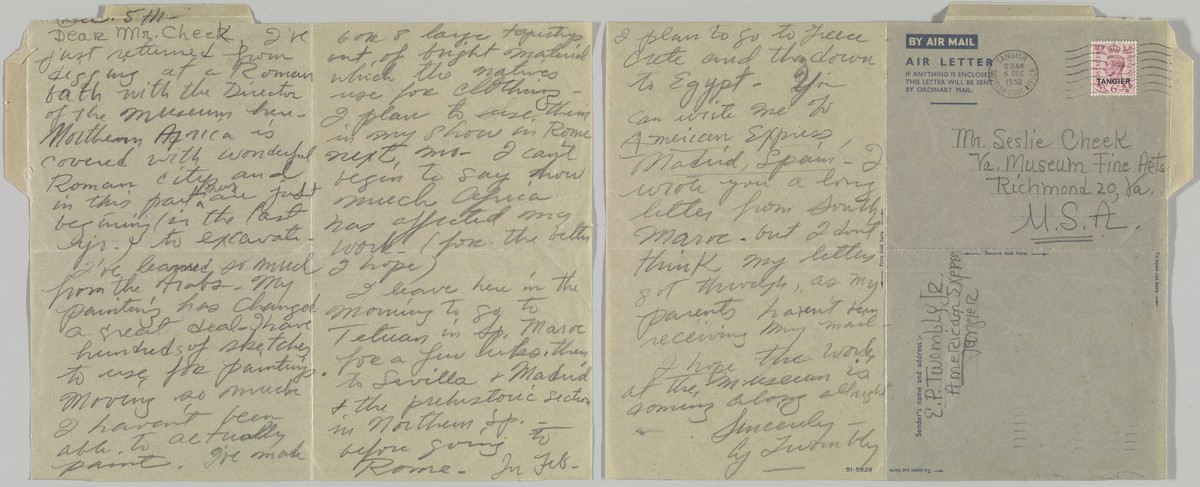This is Cy Twombly’s statement sent to Mr. Leslie Cheek, Jr. and the Committee to apply for the Out- of-State fellowship.
In the complexity of Modern Art, in the wide and diverse background of sources and origins, it is fatal to look merely on the surface for cause, but to go back to the arts of the primitive cultures, classic construction and even National Traditions - for it is apparent that Mondrian is an outgrowth of Vermeer and the Flemish tradition, as Matisse is the French tradition, while Picasso draws directly and freely on the Spanish, French, African and Classic cultures.
The twentieth century is the great period for the revaluation of all known past cultures - The art of the Africans and Indians and etc., which have been considered barbarian, thus inferior cultures, have taken their due places of importance in relationship to our own present complex cultural patterns. The static classic cast and the eighteenth artificiality, which as art concept, has thus been broken to a great degree.
What I am trying to establish is - that Modern Art isn’t dislocated, but something with roots, tradition and continuity.
For myself the past is the source (for all art is vitally contemporary). I’m drawn to the primitive, the ritual and fetish elements, to the symmetrical plastic order (peculiarly basic to both primitive and classic concepts, so relating the two).
A Fellowship would be of great benefit. It would enable me to go to Europe to come in direct contact with sculpture, painting and architecture in context. To experience European cultural climates both intellectual and aesthetic.
I will be able to study the prehistoric cave drawings of Lascaux (the first great art of Western Civilization). The French, Dutch and Italian Museums, the Gothic, Baroque architecture, and Roman ruins. Such experience will provide energy and material for my work. It will broaden my own knowledge and concepts, not only for the painting I intend to do there, but for a lifetime of work.
